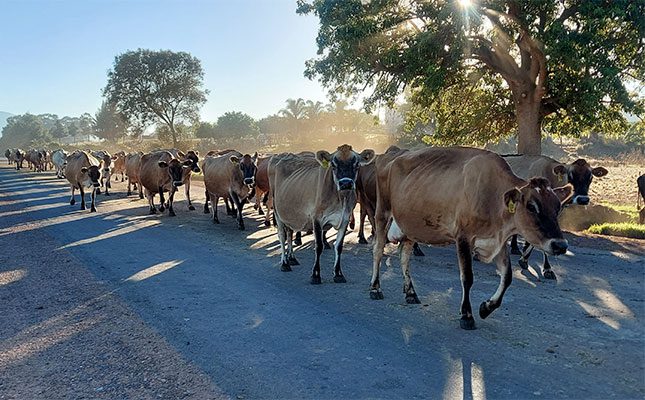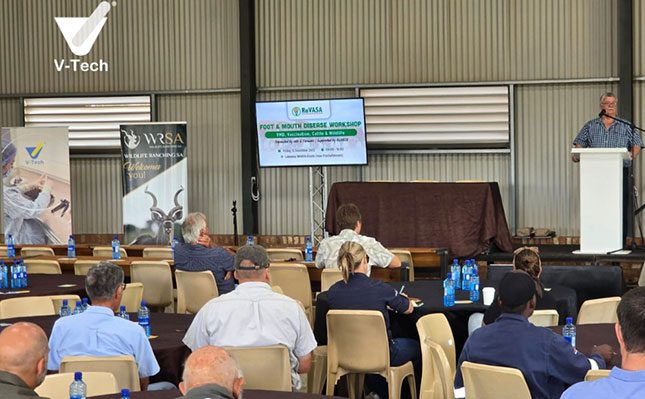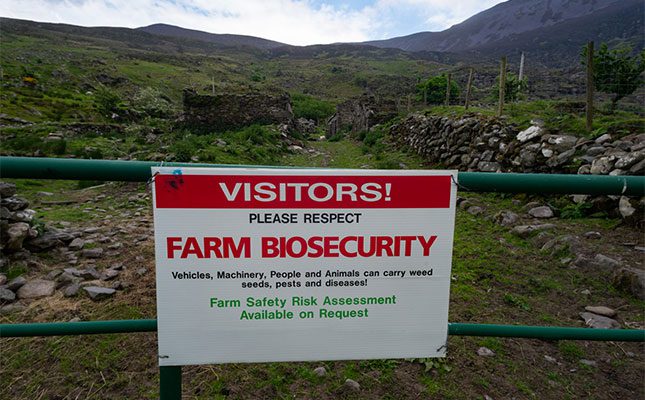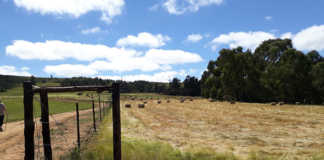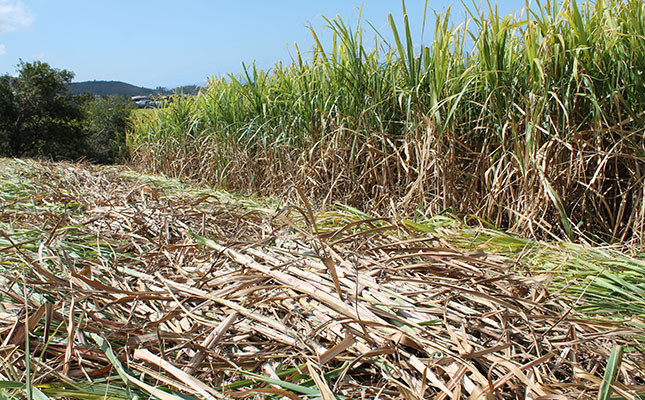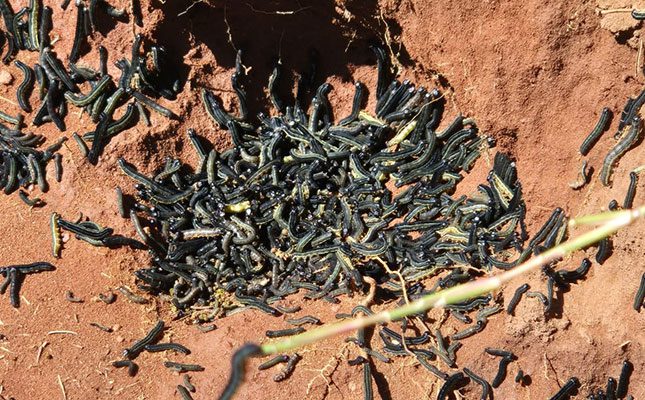
Over the past two weeks, incidents of African armyworm have been experienced across the summer rainfall area, from the grasslands and bushveld to subtropical regions.
“As far as I know, this is the worst outbreak ever in South Africa. I have received hundreds of phone calls and enquiries about African armyworm since the first incident was reported, with outbreaks now confirmed in North West, Limpopo, Gauteng, Mpumalanga and the Free State,” Verdoorn told Farmer’s Weekly.
READ Know your armyworm species
On top of this, various other caterpillar problems have popped up. Verdoorn said reports have been received of lawn caterpillars in the bushveld, looper and semi-loopers in the bushveld and Kalahari, and fall armyworm on primarily smallholder farms where BT varieties were not used in pockets of KwaZulu-Natal and the lowveld.
Cutworms have also been a big problem in various regions for the past three years, primarily affecting vegetable and maize producers.
Verdoorn ascribed the explosion in caterpillar problems to climatic conditions that favoured the swarming of caterpillars: “The summer rainfall region received a lot of early-summer rain, followed by a midsummer dry spell, and then a lot of rain since January.”
He expects the African armyworm problem to subside from mid-March as the caterpillars enter the pupae phase. A second strike can be expected after that, with the severity greatly depending on temperatures moving forward.
He explained that warm temperatures tended to favour larger outbreaks.
He said there had been rumours of African armyworm causing crop damage in Limpopo, but he doubted this because African armyworm generally only attacked planted and natural pastures.
“One farmer told me that African armyworm destroyed 5ha of his teff in something like four hours,” he said.
Pastures do recover from strikes, as the roots of the plants are not affected. But the pastures, and especially those with broad leaves, like kikuyu, become toxic in response to the strike, which along with the toxic excrements of the caterpillars pose a lethal threat to livestock.
“I have heard of a few farmers who lost small numbers of livestock, about three or four, because of toxicity problems caused by African armyworm, as well as one farmer whose whole herd turned lame. Fortunately, the herd managed to recover the next day,” Verdoorn said.
According to an article by the Agricultural Research Council (ARC), symptoms of toxicity usually appear about 10 days after the appearance of the worms, and include paralysis, large strings of saliva drooling from the mouth, and animals exhibiting an apparent thirst. Slight symptoms of bloat, grinding of teeth and nervous twitching may also occur.
The ARC advised farmers to remove their animals from affected pastures and call a vet in. The animals should be kept off the affected lands for at least 40 days.
Cypermethrin is available to control African armyworm, with the efficiency greatly depending on the age of the caterpillars.
“The caterpillar must be sprayed as young as possible. When 1mm to 5mm in size, they are very susceptible to cypermethrin products, with the small ones usually dying within about an hour. These products, however, hardly have an impact by the time the caterpillars are larger than 2cm, and their fourth instar.”
He added that one litre of a cypermethrin spray mixture should be enough to cover 5ha.
“The advantage of cypermethrin is that it has a low environmental impact, and livestock can be moved back in the land roughly seven days after an application was made. Farmers should follow the instructions on the label of the product and apply the products correctly.”
Farmers may also dig furrows, with pits dug at intervals, between lands to prevent the caterpillars from moving from one land to another, according to the ARC. The larvae will apparently crawl along the furrows and eventually fall into the pits where they can be covered up or treated chemically.
African armyworm should not be confused with fall armyworm. Verdoorn said African armyworm was endemic to Africa, whereas fall armyworm was invasive.
He said various products, biological and chemical, are available to manage fall armyworm, with maize varieties with the BT gene generally suffering no to limited damage from the species.
@farmersweeklysa An outbreak of African armyworm has been reported in Gauteng, Mpumalanga, and Limpopo. This video was taken on a farm in Middelburg by Thinus Herbst. For more info, visit www.farmersweekly.co.za #FarmersWeeklySA #agriculturetiktok #farmtok #farminginsouthafrica #armyworms #cropdamage ♬ original sound – Farmer’s Weekly SA

